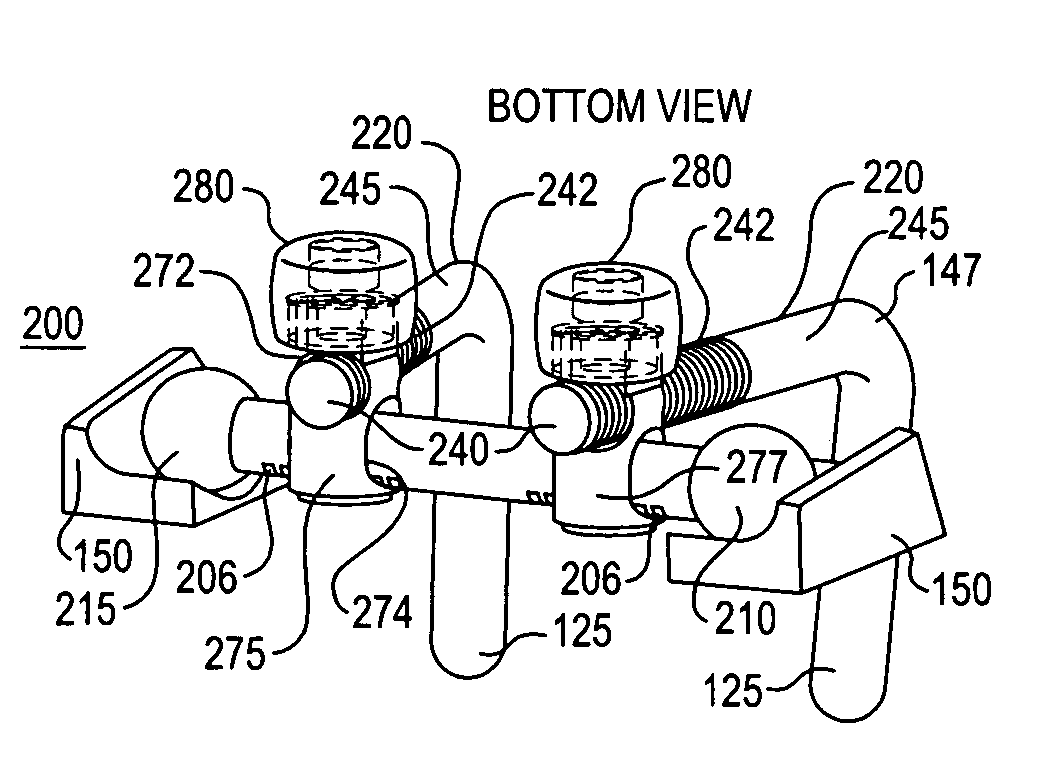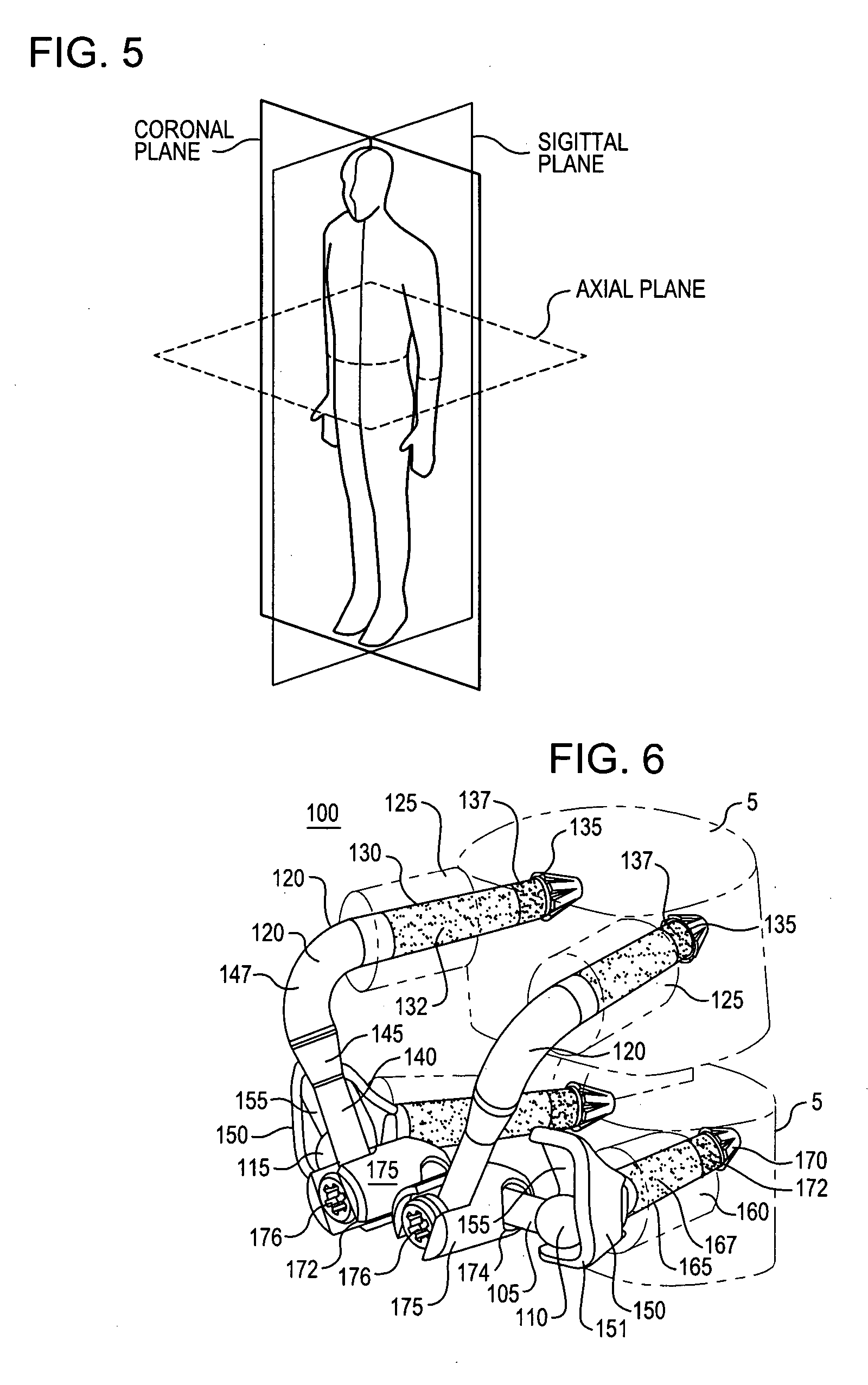Crossbar spinal prosthesis having a modular design and related implantation methods
- Summary
- Abstract
- Description
- Claims
- Application Information
AI Technical Summary
Benefits of technology
Problems solved by technology
Method used
Image
Examples
first embodiment
[0074] The crossbar 105, in a first embodiment, has a first end 110 and a second end 115. In the illustrated embodiment the crossbar 105 is a two piece bar where the first end 110 is attached to a threaded male portion 104 having threads 109. The crossbar second end 115 is attached to a threaded female portion 106 sized to receive the threads 109. As will be described in greater detail below, the threaded ends allow for the width of the crossbar to be adjusted to mate with the width between caudal bearings 150 (FIG. 9). Additional alternative embodiments of the crossbar 105 could include a series of solid crossbars of varying widths and / or thicknesses, or an adjustable crossbar having some form of locking or biasing mechanism (such as a spring-loaded tensioner or detent mechanism, etc.).
[0075] A pair of cephalad prosthesis elements 120 are also illustrated in the exemplary embodiment of the configurable and adaptable spinal prosthesis 100 of the present invention. Each cephalad pros...
embodiment 330
[0167]FIG. 31C illustrates an embodiment of an adaptive spinal prosthesis 300C having a crossbar embodiment 330 and crossbar locks 331. A crossbar lock 331 includes a cephalad arm clamp 334 about a cephalad arm 145 and a crossbar clamp 336 that encircles the crossbar 330. A dual clamp housing 332 and fastener 338 join the clamps 334, 336. The width of crossbar 330 is determined by moving the crossbar 330 relative to the crossbar clamps 336. The crossbar spacing between a cephalad bearing 305 and an elbow 147 is determined by moving the cephalad arm clamp 334 along the cephalad arm 147 to the desired position. Once the width of crossbar 330 and the position of the crossbar 330 relative to the bearing 305 and the elbow 147 are selected, the crossbar 330 is secured into the selected position by tightening the fastener 338. Tightening fastener 338 results in articulation within dual clamp housing 332 to tighten both the arm clamp 334 about the cephalad arm 145 and the crossbar clamp 336...
embodiment 340
[0168]FIG. 31D illustrates an embodiment of an adaptive spinal prosthesis 300D having a crossbar embodiment 340 with crossbar locks 341. A crossbar lock 341 includes a cephalad arm clamp 342, a crossbar clamp 344 and a fastener 346. The position of the crossbar 340 between the cephalad bearing 305 and the elbow 147 is changed by sliding the arm clamps 342 along the cephalad arms 147. The crossbar width between the crossbar clamps 344 is adjusted by sliding the crossbar 344 relative to the clamps 344. Once the position of the crossbar 340 between the cephalad bearing 305 and the elbow 147 and the width of the crossbar 340 are selected, the crossbar position is secured by tightening fastener 346. Tightening fastener 346 urges the arm clamp 342 about the cephalad arm 145 and the crossbar clamp 344 about the crossbar 340. In the illustrated embodiment, the crossbar 340 is contained in a plane above a plane that contains the cephalad arms 145, though it could be even with or below the pl...
PUM
 Login to View More
Login to View More Abstract
Description
Claims
Application Information
 Login to View More
Login to View More - R&D
- Intellectual Property
- Life Sciences
- Materials
- Tech Scout
- Unparalleled Data Quality
- Higher Quality Content
- 60% Fewer Hallucinations
Browse by: Latest US Patents, China's latest patents, Technical Efficacy Thesaurus, Application Domain, Technology Topic, Popular Technical Reports.
© 2025 PatSnap. All rights reserved.Legal|Privacy policy|Modern Slavery Act Transparency Statement|Sitemap|About US| Contact US: help@patsnap.com



